Let’s take a look at how stablecoins and RWAs are evolving in the Solana ecosystem.
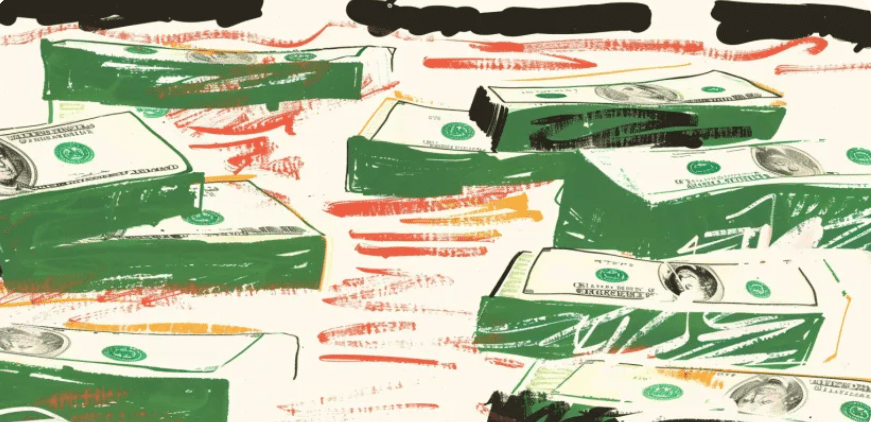
With the recent surge in ETFs, stablecoins and real-world assets (RWAs) have emerged as the strongest path to real-world adoption and enhancing the existing financial system through on-chain economies.
Larry Fink’s mission to “tokenize the world” was one of the most discussed memes of the round, and he continued this vision with Blackrock’s tokenized on-chain fund BUIDL. Stablecoins also remained a focus of discussion due to protocols such as Ethena, Stripe’s return to the market with USDC payments, and new EU regulations such as MiCA.
While Ethereum and Tron are the stablecoin hubs, Solana has stood out this cycle, with daily volumes exceeding $100 billion at its peak. RWA activity on the network has also increased, with Ondo’s USDY as DeFi collateral, Maple Finance partnering with Jito, and the launch of Libre Fund.
This article will dive into all of these developments to understand the momentum Solana is gaining towards becoming one of the chains with the most real-world applications.
Stablecoins on Solana
Stablecoins on Solana have shown strength and continued expansion this cycle, highlighting the network’s robustness and attractiveness to stablecoin issuers.
Today, Circle’s USDC dominates the stablecoin space on Solana, accounting for approximately 70% of the total stablecoin supply on the chain, despite only holding approximately 30% on Ethereum.
As of this week, USDC outperforms USDT (the second largest on-chain token) by about 19:1 in volume, despite USDT’s total market cap of $114 billion and daily trading volume of $31.5 billion on Ethereum, exceeding the top 20 ERC tokens combined. USDC’s dominance on Solana stems from Circle and the Solana Foundation’s strategy to incentivize developers and promote integration with exchanges.
For example, developer subsidies for USDC from platforms such as Solend and SuperTeam have attracted more developers to join Solana. The Cross-Chain Transfer Protocol (CCTP) launched by Circle on Solana has also improved the usability and liquidity of USDC. In addition, Circle's Web3 service simplifies smart contract development, meets developer needs and facilitates the integration of USDC. Altogether, these efforts aim to unify DeFi and establish USDC as Solana's leading stablecoin.

via Artemis
In third place is Paypal’s PYUSD, with a circulating supply of approximately $240 million, which currently accounts for approximately 11% of the total stablecoin supply on Solana less than two months after its launch.
DeFi protocols like Kamino Finance have fueled this growth by offering significant supply-side yields for PYUSD starting July 1. These yields start at 30% and drop to 23%, but the borrowing APY is 0.22%, compared to 21% for USDC and 16.5% for USDT, making PYUSD an attractive DeFi tool. In the week of July 1, PYUSD supply increased by 88%, with 38% of that going to Kamino.
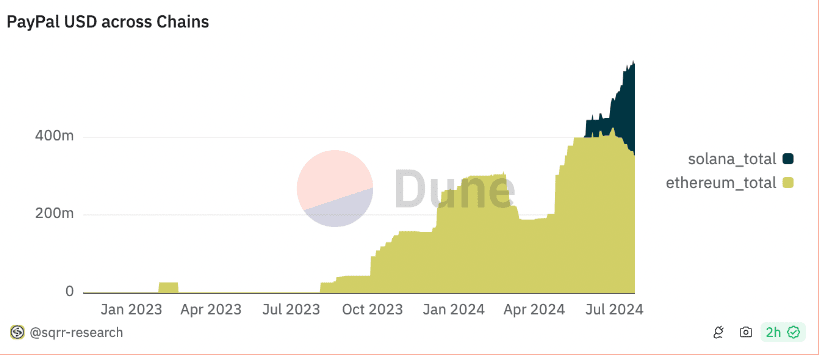
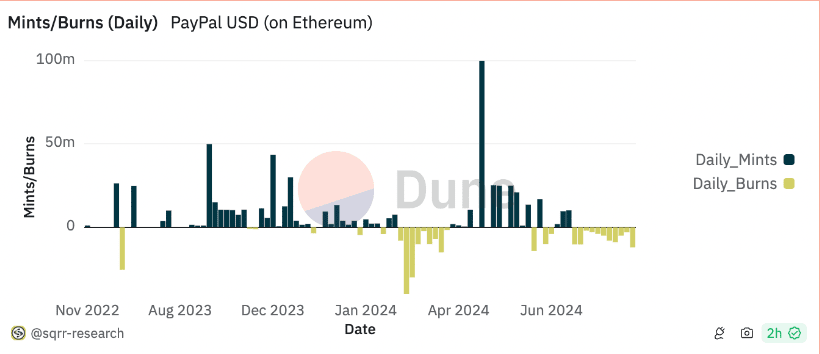
via Dune
In addition to stablecoin issuers, integrations with Solana from major financial platforms like Stripe and Shopify open up new opportunities for developers and businesses to leverage the network to build trusted platforms that serve everyday needs and connect Solana to mainstream finance.
Here, projects such as Sphere, Lulo, Decaf, and Helio are already under development, simplifying crypto trading and leveraging stablecoins like USDC to provide everyday financial services such as conversion to local currency, facilitating crypto payments for e-commerce, and high-yield savings.
Overall, the momentum behind stablecoins on Solana appears promising for expanding the service scope of the existing financial system through efficient on-chain solutions.
RWA on Solana
Although quiet compared to Ethereum’s RWA growth, Solana’s integration of real-world assets is building a fertile ecosystem beyond tokenized treasuries.
Ondo Finance’s flagship tokenized funding product, USDY, was deployed on Solana in December 2023 and currently has a market cap of $42 million, which is relatively small compared to other leading stablecoins, and it is often categorized as a stablecoin. Despite its size, USDY has seen interesting developments, such as its integration into the perps DEX Drift Protocol as collateral.
This and future collaborations will add utility beyond lending to tokenized real-world assets, improving capital efficiency for traders.
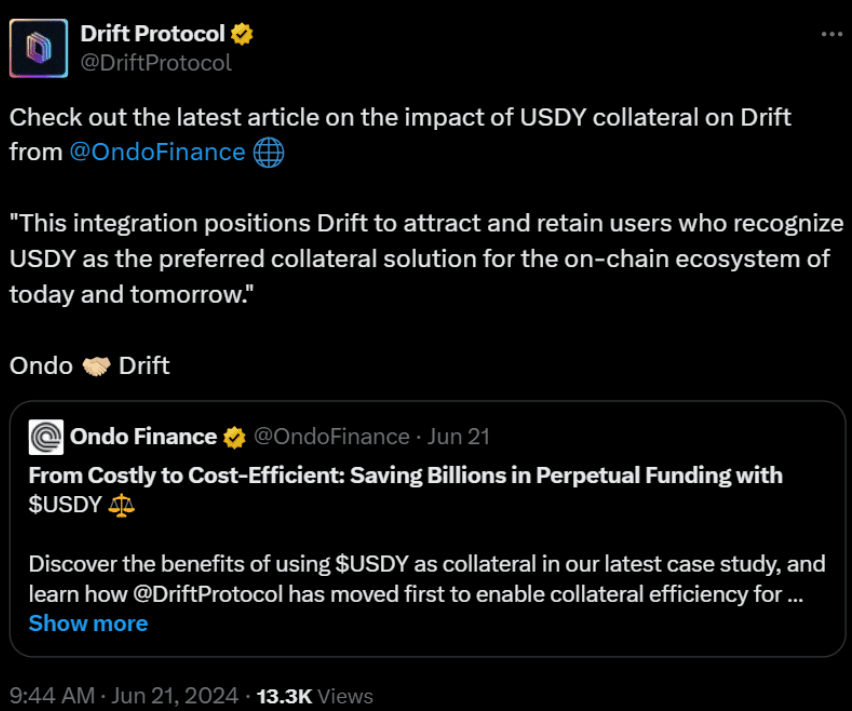
via X
Other interesting RWA projects in the Solana ecosystem right now include Maple and Parcl.
Maple, a marketplace for whitelisted companies to borrow from on-chain liquidity pools, was redeployed on Solana last year to provide yield channels for stablecoins and altcoins through the overcollateralized loan market. In addition to this, Maple has also partnered with Jito to launch a new retail loan product, Syrup. The partnership will provide flexible financing for borrowers using JitoSOL, unlock sources of yield for lenders, and strengthen risk management using JitoSOL's liquidity.
Parcl is a real estate perpetual DEX that allows users to invest and trade long or short in specific geographic markets (such as Boston, Chicago, or Miami) with up to 10x leverage. The protocol is designed for directional investment and hedging strategies, democratizing access to a traditionally opaque asset class. Parcl will also expand into the foreign exchange market, with the upcoming launch of British Pound (GBP) and Euro (EUR) markets.
via Parcl
This is just the beginning of Solana RWA expansion, which will continue to be powered by the recently announced Libre Fund and the upcoming launch of Jupiter’s GUM Alliance and elmnts’ exchange.
Freedom Fund
Libre, a joint venture between Brevan Howard's WebN Group and Nomura's Laser Digital, is launching a series of tokenized funds on Solana, such as the Hamilton Lane SCOPE fund, which is known for its high returns, and the Brevan Howard Master, which focuses on global macro trading strategies. Fund. Libre’s program already has nearly $20 million in TVL before launch and plans to launch secondary trading services for its funds later this year.

free way
Jupiter's GUM Alliance
Working with the Solana Foundation and market makers like Wintermute and DWF Labs, Jupiter’s “Grand Unified Market” (GUM) initiative aims to create a “single atomic market” on Jupiter for all assets from FX and equities to RWAs like credit, Treasuries and real estate, as well as cryptocurrencies.
The initiative aims to efficiently introduce tokenized assets by ensuring deep liquidity and solving the common “chicken and egg” problem in tokenization, where issuers are reluctant to tokenize assets without liquidity, and liquidity remains low until more assets are tokenized.
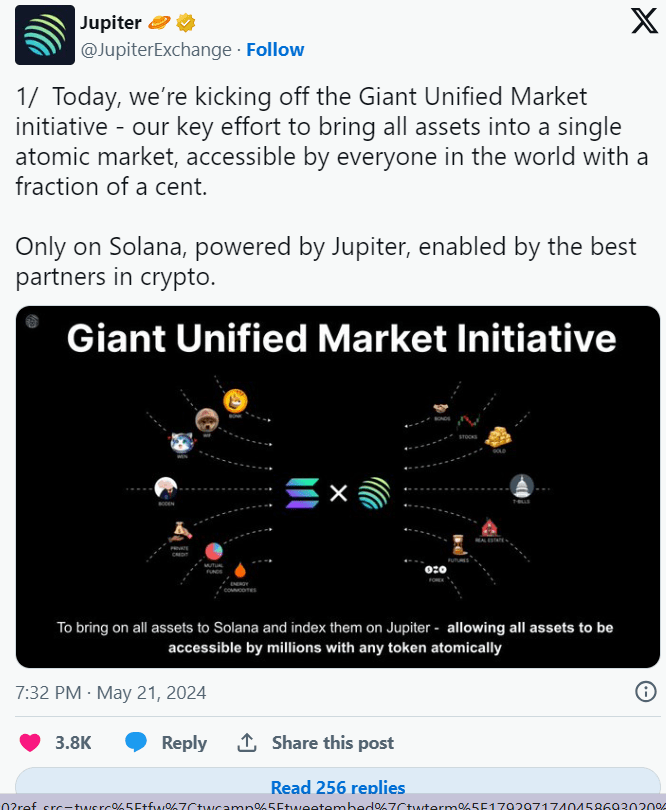
elmnts
Elmnts is an emerging market for tokenizing essential energy resources such as mineral rights in the oil and gas industry, which is expected to generate more than $800 billion in revenue by 2024. This approach improves transparency, accessibility and liquidity, addressing the high transaction costs and low liquidity in the current market.
To do this, the company acquires mineral rights through auctions, private sales and online, and has experts who track active lease areas and understand the oil and gas market. This market simplifies the investment process, reduces costs, and allows more investors to participate with lower fees and minimums.

Zooming out
With the significant growth of stablecoins and the increasing number of RWA products, Solana has laid a solid foundation for leveraging on-chain economics to expand into real-world markets.
With new and upcoming initiatives like Libre’s Tokenized Fund, Jupiter’s GUM Alliance, and elmnts’ Fundamental Energy Resource Marketplace, Solana continues to not only deeply integrate into the RWA market, but also provides broader access to on-chain real-world assets than most other chains.
In fact, a recent report from Coingecko shows that the two hot topics in Q2 2024 are memecoins (of course) and RWAs. If Solana can attract the same attention to RWAs as memecoins, it could attract institutional capital to the chain and solidify its position as a leader in this cycle’s trends.
As the existing financial system merges with the decentralized financial system, Solana’s role in facilitating the tokenization of traditional assets will continue to expand, solidifying its position as the chain that can meet all needs, whether from retail or institutional. $SOL






